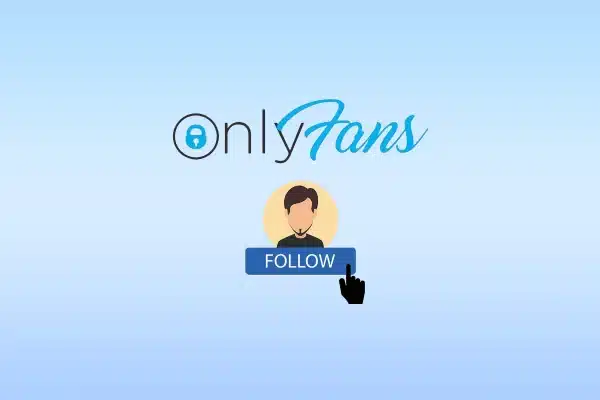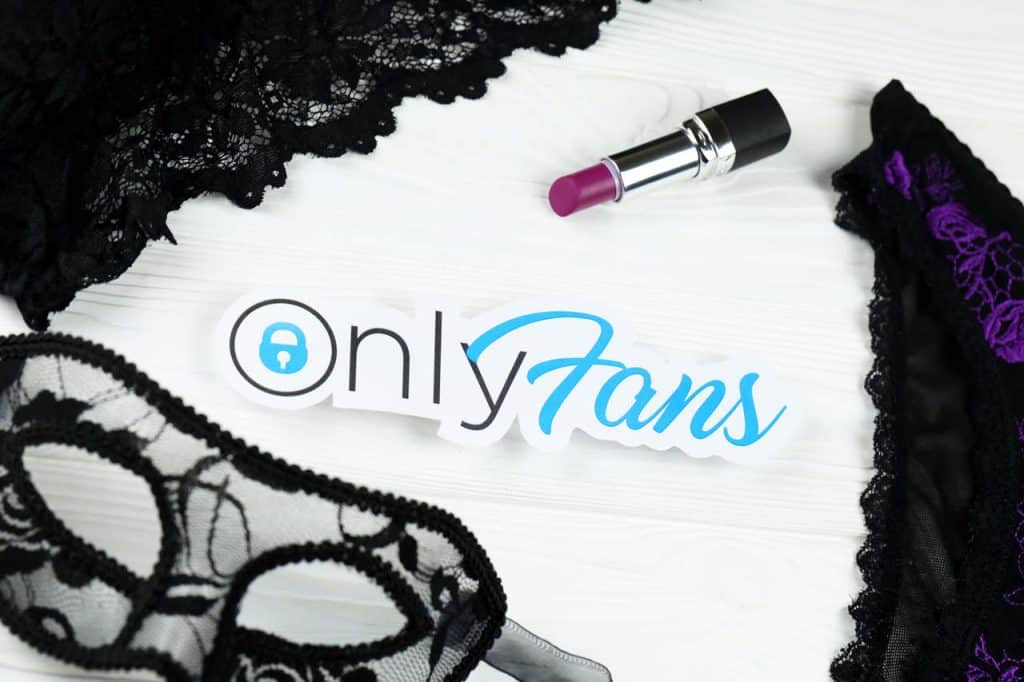Fanvue Vs Fansly: An In-Depth Comparison Of Features And Benefits
In the current digital age, social media platforms have revolutionized the way we connect with friends, family, and even strangers. Among these platforms are fan-based subscription sites like Fanvue and Fansly that offer users a chance to monetize their content. These websites create an environment where fans can interact more closely with their favorite creators while also enjoying exclusive content.
Comparing two popular fan-based subscription sites can be tricky since they have unique features that cater to different user bases. However, by examining their offerings side by side, we can gain insights into the benefits and drawbacks of each platform.
In this article, we will provide an in-depth comparison of Fanvue vs Fansly’s features and benefits. We will explore factors such as user base and popularity, subscription models, selling content and merchandise options, live streaming capabilities, referral programs, payment processing fees, mobile app availability – ultimately helping you decide which platform is best suited for your needs as a creator or subscriber.
Key Differences When Comparing Fanvue Vs Fansly
- Fanvue and Fansly are fan-based subscription sites for monetizing content, competing with other subscription-based social media platforms for creators like OnlyFans and Patreon.
- Fanvue, established in 2017, has a reputation for being more artist-friendly with emphasis on music and visual arts, while Fansly, launched in 2020, gained popularity among adult content creators due to more lenient policies on explicit content.
- Fanvue offers monthly subscription models with three tiers and a focus on sports-related content, while Fansly offers a pay-per-view model where creators set their prices for each piece of content and caters to a broader user demographic, including models, influencers, and content creators from various niches.
- The choice between Fanvue and Fansly depends on the type of community-building experience creators want to provide, with Fanvue being more cost-effective for regular content creators and Fansly suiting those who produce infrequent but high-quality content. Both platforms offer messaging and communication features, strict privacy and moderation policies, collaboration tools, referral programs, and payment processing options.
Overview of Fanvue vs Fansly

Both Fanvue and Fansly are competing subscription-based social media platforms that cater to creators, allowing them to monetize their content through exclusive fan interactions and premium features. While both platforms have similar business models, they differ in terms of their features and benefits.
Fansly is a newer platform that launched in 2020 and has since gained popularity among adult content creators due to its more lenient policies on explicit content. On the other hand, Fanvue has been around since 2017 and has a reputation for being more artist-friendly with its emphasis on music and visual arts.
In terms of market competition, both platforms are up against established players like OnlyFans, Patreon, and ManyVids. However, Fanvue distinguishes itself by offering unique features such as an integrated marketplace where users can sell physical merchandise alongside their digital content. Meanwhile, Fansly stands out with its focus on user experience by providing a sleeker interface and better customer support.
With these pros and cons in mind, it’s clear that both Fanvue and Fansly have carved out niches within the crowded creator economy landscape. In the next section, we will delve into their respective user bases and popularity.
User Base and Popularity
The user base and level of popularity of each platform can be considered when evaluating their potential impact in the industry.
Fanvue is a relatively new platform that was launched in 2020, catering mostly to sports enthusiasts and athletes. While Fanvue may have a smaller audience than Fansly at present, it is gaining ground quickly due to its focus on sports-related content.
On the other hand, Fansly has been around since 2017 and has a broader user demographic, including models, influencers, and content creators from various niches. Fansly’s early entry into the market gave them an advantage in establishing partnerships with high-profile individuals who have significant followings on social media. While Fansly has been able to establish itself as a popular destination for exclusive content across various niches due to its early entry into the market and influencer partnerships.
With the rise of subscription-based services for exclusive content, several platforms have emerged to compete in this market. Fanvue and Fansly are among these platforms that offer unique experiences for their audiences while also providing monetization opportunities for creators. However, both platforms face stiff competition from established players such as OnlyFans and Patreon.
The next section will examine how these two platforms differ in terms of their subscription models.
Subscription Models
Regarding subscription models, it is noteworthy to consider the differences between the pricing structures and revenue sharing ratios of Fanvue and Fansly.
Fansly’s subscription model offers three different tiers: $10 per month for a basic subscription, $25 per month for a premium one, and $50 per month for an exclusive membership.
On the other hand, Fanvue has two pricing tiers: the first one being a 20% transaction fee on all earnings with no monthly fee, while the second tier offers a $9.99 monthly subscription with only a 10% transaction fee.
In terms of revenue sharing, both platforms offer their creators competitive rates.
Fansly’s revenue sharing ratio is set at 70/30 in favor of creators; meaning that fans pay 100% of the subscription fee to their chosen creator while Fansly keeps only 30%.
In contrast, Fanvue operates on an 80/20 split in favor of creators; this means that fans pay 100% of their purchase price directly to the creator while Fanvue retains only 20%.
When selecting which platform to use as a creator or consumer, it is important to note these slight differences in pricing structures and revenue sharing ratios.
While both platforms have competitive rates as compared to other similar platforms available in the market today; some may favor one over the other depending on their personal preferences.
As we move forward into discussing how selling content and merchandise can be advantageous for creators on these platforms – it is worth noting that each platform’s unique approach towards subscriptions will affect how they handle sales within their ecosystem.
Selling Content and Merchandise
Selling content and merchandise on subscription-based platforms can provide creators with an opportunity to monetize their work.
Content creation has become a popular way for individuals to showcase their creativity, build a following, and make money.
Subscription-based platforms such as Fanvue and Fansly offer creators an avenue to sell their content directly to their audience.
Additionally, these platforms allow creators to experiment with different monetization strategies, including pay-per-view options or merchandising sales.
Brand partnerships have also become an essential component of many creators’ monetization efforts.
By partnering with brands that align with their niche or interests, creators can promote products directly to their audience while generating additional revenue streams.
For instance, a beauty creator on fanvue might partner with a cosmetics company to create sponsored content promoting new product launches or tutorials using the brand’s products.
Overall, selling content and merchandise on subscription-based platforms is becoming increasingly popular among creators looking for alternative ways of earning income through their creative pursuits.
These platforms offer a unique opportunity for individuals to connect with an engaged audience while creating original content that resonates with them.
In the next section about live streaming, we will explore how subscription-based live streaming services are changing the way audiences interact with digital media.

Live Streaming
Live streaming has revolutionized the way creators engage with their audience, providing a real-time and interactive platform for content delivery.
If we compare Fanvue Vs Fansly, they both offer live streaming features to their users, but they differ in terms of technical requirements and monetization strategies.
Firstly, Fanvue allows its creators to stream live on its platform without requiring any additional software or equipment. On the other hand, Fansly recommends that its users use external broadcasting software such as OBS or Streamlabs for better quality streams. This may require more technical knowledge and investment from creators who are just starting out.
Secondly, both platforms allow creators to monetize their live streams through various means such as pay-per-view access or subscription-based models. However, Fanvue offers an additional feature where fans can tip creators during the live stream itself, which can increase audience engagement and revenue potential.
Lastly, audience engagement is crucial in creating a successful live streaming experience. Both Fanvue and Fansly offer chat capabilities during livestreams, but Fansly also allows direct messaging between creator and fan which can lead to more personalized interactions.
While both platforms offer similar features for live streaming, there are differences in technical requirements and monetization strategies that may affect a creator’s decision on which platform to choose. Additionally, Fansly’s added feature of direct messaging could be beneficial for those looking to increase audience engagement beyond just the livestream itself.
Messaging and Communication
Messaging and communication play a crucial role in fostering engagement and building relationships between creators and their audience. Fanvue offers direct messaging, group chat, and video chat features for creators to communicate with their fans privately or publicly. This enables creators to provide personalized attention to individual fans or groups of them, which can increase user engagement on the platform. However, privacy concerns are also important when it comes to messaging, and both Fanvue and Fansly have strict policies in place to ensure that users’ personal information remains secure.
Moderation policies are another important aspect of messaging and communication on these platforms. In order to maintain a healthy community environment, both Fanvue and Fansly have moderation teams that monitor conversations, flag inappropriate behavior or content, and take action accordingly. This helps create a safe space for all users to interact without fear of harassment or abuse.
Overall, messaging and communication features are essential for engaging with fans on these platforms. Both Fanvue and Fansly offer robust options for creators to connect with their audience in various ways while maintaining user privacy and safety through moderation policies.
Moving forward into the next section about selling physical items, it’s worth noting that effective communication can help increase sales by building trust between creators and their fans.
In addition to messaging features being key for building trust between creators and fans, offering physical merchandise is another way for creators to deepen connections with audiences – let’s explore how this works on each platform.
Selling Physical Items
One effective way for creators to build deeper connections with their audience is by offering physical merchandise on their chosen platform. Both Fanvue and Fansly offer a variety of tools for content creators to create and sell physical items, ranging from custom clothing to personalized artwork. Here are some features that these platforms offer:
- Creating Products: Both Fanvue vs Fansly allow creators to design and sell custom products directly through their platform. This includes creating unique designs for t-shirts, hats, mugs, stickers, and more. Creators can upload their own graphics or use built-in design tools to create eye-catching merchandise that resonates with their audience.
- Shipping Options: When it comes to shipping options, both platforms offer similar services. Creators can choose between standard shipping or expedited delivery based on the needs of the customer. Additionally, they can set up international shipping options or limit sales to specific regions if necessary.
- Marketing Strategies: In order to maximize sales potential, both platforms provide marketing strategies for creators looking to promote their products effectively. This includes email campaigns, social media ads and promotions, as well as influencer collaborations.
Overall, both Fanvue and Fansly provide ample opportunities for content creators looking to expand their revenue streams by selling physical merchandise directly through their platforms. These features enable them not only to monetize their content but also connect more deeply with fans through tangible goods that showcase a creator’s brand identity.
Moving forward into the next section about collaboration tools for content creators, it’s important for us to understand how these tools work in conjunction with the ability of creators’ selling physical items on these platforms. Collaboration tools such as chat rooms or forums might be used by influencers who want feedback from fans about what kind of merchandising will resonate best with them while managing orders and designing new products.
Collaboration Tools for Content Creators
Collaboration tools have become increasingly important for content creators, with a survey by Influencer Marketing Hub revealing that 70% of influencers believe collaboration is essential to their success. The benefits of collaboration are many, including access to new audiences and markets, increased exposure and credibility, and the ability to leverage each other’s strengths and expertise. Creative collaborations also enable content creators to produce more engaging and diverse content that resonates better with their audiences.
One popular collaborative tool used by content creators is live streaming. Live streaming allows for real-time interaction between collaborators, enabling them to create content together even when they are in different locations. This type of collaboration can be especially effective for events or product launches that require multiple perspectives or expertise.
Other digital tools such as Google Docs or Trello can also facilitate seamless communication and project management among collaborators.
Collaborative content creation has become an integral part of the influencer industry, enabling creators to expand their reach and build stronger relationships with their audience. Both Fanvue and Fansly offer various collaboration tools for its users, allowing them to connect with other creators in the platform through features like messaging or group chat. These platforms recognize the importance of fostering a collaborative environment where users can share ideas, support each other’s work, and ultimately grow together as a community.
As we move on to discuss referral programs in the subsequent section, it is worth noting how these programs can further incentivize collaborations among users within these platforms.
Referral Programs
Referral programs have become a prevalent marketing strategy for online platforms to incentivize their users to invite new members and expand their user base. Both Fanvue and Fansly offer referral incentives that allow content creators to earn a percentage of the revenue generated by their referred users. However, there are notable differences between the two platforms’ referral programs.
Fanvue offers its content creators a 20% commission on the referred user’s subscription fees for the first six months. Creators can access promotional materials such as banners and referral links through their dashboard. The earning potential is unlimited, meaning that creators can refer as many users as they want and earn commissions on all referrals during the six-month period.
On the other hand, Fansly provides a 5% commission on referred user spending for life. This means that creators will continue to earn commissions as long as their referred users remain active subscribers.
Both Fanvue and Fansly offer referral programs that provide earning potential for content creators looking to expand their audience base. While Fanvue offers higher initial commissions over a fixed time frame, Fansly provides lower but consistent earnings for life. The choice between these two platforms ultimately depends on personal preferences in terms of short-term versus long-term earning goals.
Moving forward, we will now explore payment processing and fees on both platforms without disruption of thought flow or transition words such as ‘step.’
Payment Processing and Fees
Payment processing and fees are important aspects to consider when comparing different online platforms for content creators. Both Fanvue and Fansly offer multiple payout options for their users, including direct deposit, wire transfer, and cryptocurrency. However, they differ in terms of transaction fees. While Fanvue charges a 10% transaction fee on all sales made through the platform, Fansly only charges a 5% fee.
In addition to transaction fees, dispute resolution is another significant factor to consider when choosing an online platform for content creation. Fanvue Vs Fansly have measures in place to address disputes between creators and subscribers. However, the exact process may vary depending on the situation and severity of the issue at hand. It is important to review each platform’s policies regarding dispute resolution before signing up.
Overall, while both platforms offer comparable payout options and dispute resolution processes, it may be more cost-effective for creators to choose Fansly due to their lower transaction fees. As with any financial decision, it is essential to compare all available options carefully before making a final choice.
The next section will discuss mobile app availability on both platforms as another factor for consideration when choosing an online content creation platform.
Mobile App Availability
Continuing our discussion on the payment processing and fees of Fanvue and Fansly, let us now delve into the current subtopic: mobile app availability. In today’s fast-paced world, people rely heavily on their smartphones for entertainment and communication. Thus, it is essential to consider whether a platform has a mobile app presence or not.
Both Fanvue and Fansly have dedicated apps available for download in both iOS and Android platforms. This makes them accessible to a wider audience who prefer using their smartphones over desktops or laptops. Additionally, these apps allow users to access their accounts anytime, anywhere with just a few taps on the screen.
Apart from being available in App Store and Google Play Store, both platforms also boast cross-platform compatibility. Users can seamlessly switch between devices without losing any data or progress made on either platform. This feature provides convenience for users who use multiple devices throughout the day.
Considering that both Fanvue and Fansly offer mobile app availability across different platforms, it comes down to individual preferences when choosing which one to use. In the next section, we will discuss which platform is right for you based on various factors such as target audience, content type, and revenue potential.
Which Platform is Right for You?

When considering which platform to use, several factors should be taken into account.
Firstly, pricing plans and payment options are essential in deciding which platform is right for you. Fanvue offers a monthly subscription model with three tiers: Basic ($10/month), Plus ($25/month), and Premium ($50/month). On the other hand, Fansly offers a pay-per-view model where creators set their prices for each piece of content. Thus, if you plan on creating regular content, Fanvue might be more cost-effective, while Fansly suits those who produce infrequent but high-quality content.
Another factor to consider is content restrictions. Both platforms allow adult content; however, Fanvue has strict guidelines regarding nudity and explicit language that creators must adhere to avoid violating their terms of service. Meanwhile, Fansly allows creators more freedom in creating mature content without limitations. If your brand thrives on producing risqué or adult-oriented material, then Fansly might be the better option.
Community engagement is another critical aspect that sets these two platforms apart. While both offer messaging services between creators and subscribers/followers, Fanvue also features an interactive live video stream feature called ‘FanVue Live’ that enables real-time communication between Creators and followers during performances or events. In contrast, Fansly does not have this feature yet but allows direct messaging with fans through their website interface.
Ultimately it depends on what kind of community-building experience you want to provide as a creator – if real-time interaction is important to you – then Fanvue may be more aligned with your needs than Fansly’s interface-centric approach.
Frequently Asked Questions
What are the technical requirements for using Fanvue or Fansly?
To use either Fanvue or Fansly, users require a computer with adequate hardware requirements including a webcam and microphone, as well as a stable internet connection with speeds of at least 5 Mbps. Both platforms offer various payment options for their services.
Can I upload any type of content on both platforms?
Both Fanvue and Fansly have content restrictions and user guidelines that prohibit illegal or offensive material. Legal considerations include copyright infringement, defamation, and obscenity laws. Users must comply with these regulations to avoid account suspension or legal action.
Are there any restrictions on the types of merchandise I can sell on either platform?
Both Fanvue and Fansly have guidelines for selling adult content or controversial items on their platforms. Payment gateways are supported by both, but there may be transaction fees or restrictions. Each platform offers various promotional features such as email campaigns, affiliate programs, and analytics.
Can I connect my social media accounts to my Fanvue or Fansly profile?
Social media integration is a common feature on both Fanvue and Fansly. However, users must be mindful of privacy concerns when connecting their accounts. These integrations can enhance user engagement strategies and increase visibility.
What level of customer support is available on both platforms?
Both Fanvue and Fansly offer 24/7 customer support with knowledgeable staff. Response time may vary depending on the complexity of the issue. Both platforms prioritize timely resolution and strive to provide excellent service to their users.
Conclusion
In conclusion, the comparison between Fanvue Vs Fansly reveals that both platforms offer unique features and benefits to their users. While Fanvue boasts a larger user base and wider popularity, Fansly offers a more flexible subscription model and higher revenue potential for content creators.
To put it in an allegory, choosing between Fanvue Vs Fansly is like deciding between two paths in a forest. The path of Fanvue is well-trodden with many travelers, providing a sense of security and familiarity. On the other hand, the path of Fansly may be less traveled but offers new possibilities for adventure and discovery.
Ultimately, the decision on which platform to use depends on individual needs and preferences. Content creators seeking a larger audience may find success on Fanvue while those looking for greater autonomy over their content and earnings may prefer Fansly’s customizable subscription model.
Regardless of which path one chooses, both platforms offer opportunities for growth and success in the world of fan engagement.















































































